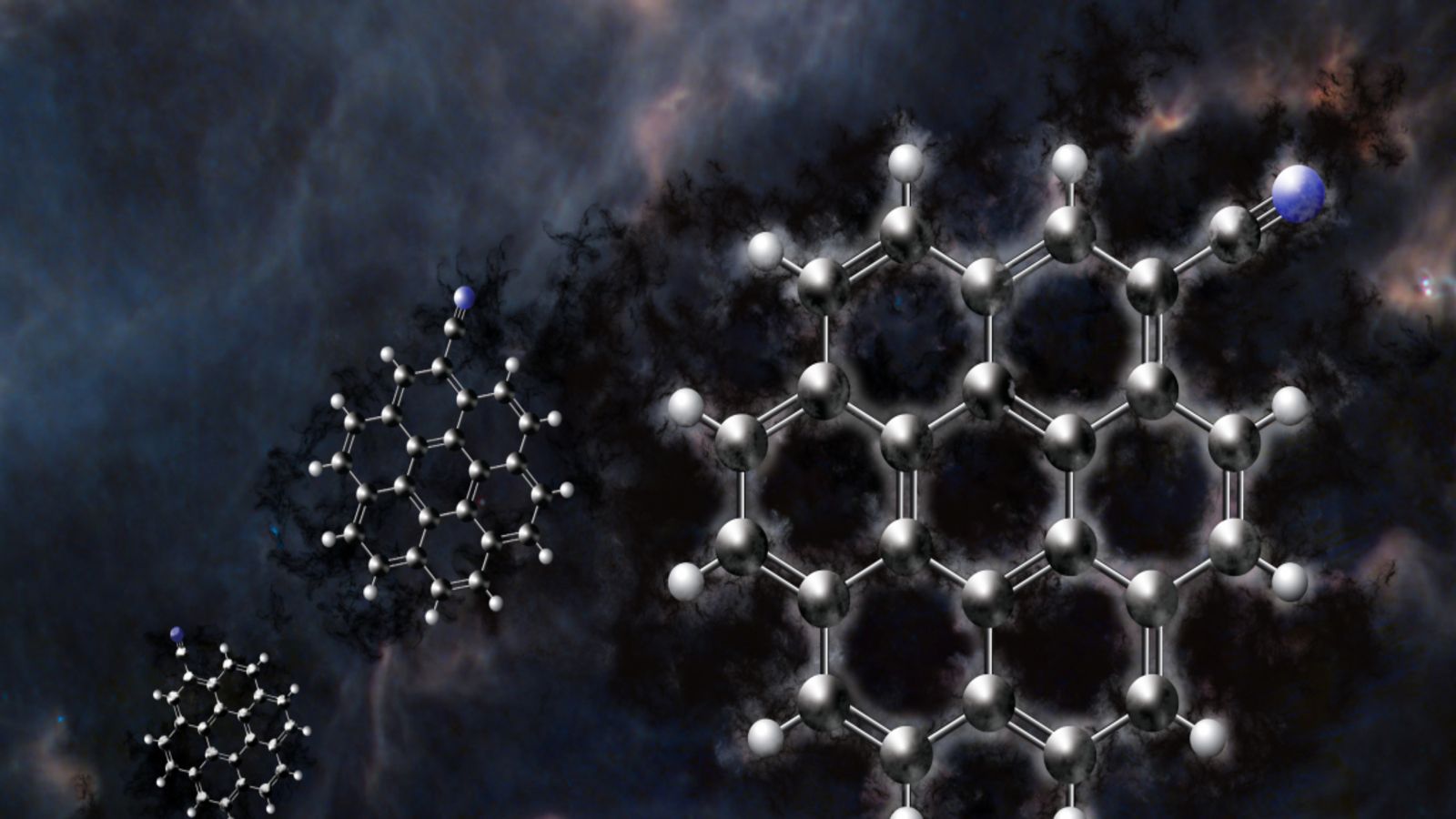🌱 The formation of life begins even before stars are born
Follow us on Google News (click on ☆)

An illustration of cyanocoronene, the largest polycyclic aromatic molecule detected to date.
Credit: NSF/AUI/NSF NRAO/P.Vosteen
The discovery was made using the Green Bank radio telescope. It detected cyanocoronene in a region of space called the Taurus Molecular Cloud, an area known for its abundance of molecules.
These carbon-rich molecules, called PAHs (polycyclic aromatic hydrocarbons), could be involved in the formation of stars and planets. This discovery reinforces the idea that complex organic molecules can appear long before the birth of a planetary system.
Scientists used a highly precise detection method. They compared radio signals recorded by the telescope with those obtained in the laboratory. Each molecule has a unique "fingerprint," like a signature, which confirmed their presence.
Understanding how these molecules form can shed light on the history of the building blocks of life. Researchers now want to know how they react to their space environment, particularly to cosmic rays and ultraviolet light.
How do these molecules form in space?
In space, certain cold and dense areas, called molecular clouds, provide ideal conditions for creating organic molecules. The dust present in these regions helps atoms combine.
Despite the extreme conditions of space—very low temperatures and strong radiation—complex chemical reactions can occur there. Molecules like cyanides allow carbon structures to assemble, forming increasingly larger compounds, such as cyanocoronene.
These molecules could then travel through space, eventually being incorporated into forming planets. This opens the possibility that they played a role in the emergence of life.
Why are radio telescopes used?
Radio telescopes capture radio waves naturally emitted by molecules in space. Each molecule emits a very specific frequency, which allows it to be identified.
Unlike traditional telescopes, radio telescopes can observe through dust clouds that obscure certain regions of space. This makes them very useful for studying areas where stars are born.
These highly sensitive instruments now allow the detection of increasingly complex molecules. By comparing observed data with laboratory results, scientists can identify with certainty the compounds present in the Universe.